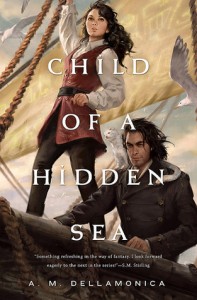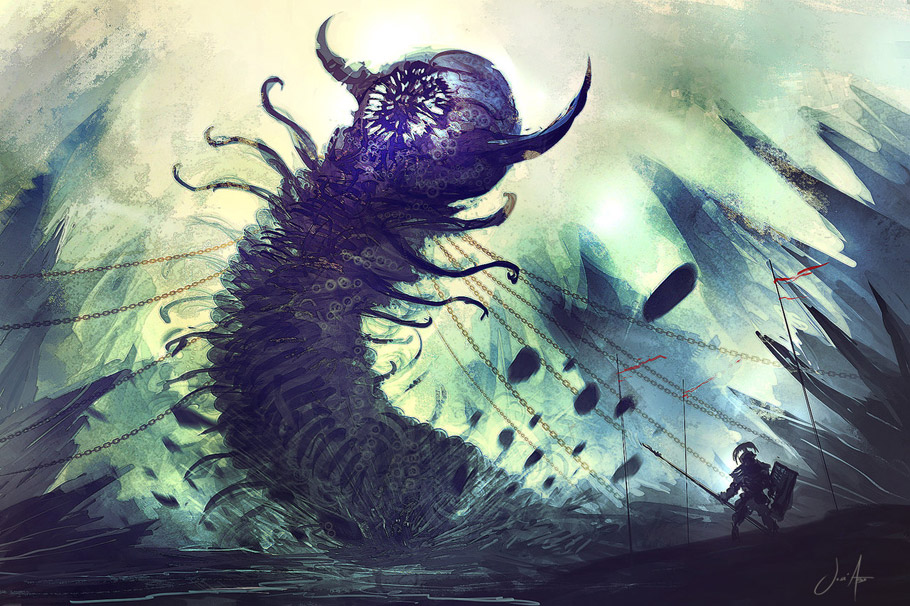Publisher: Tor Books -
Pages: 336 -
Buy: Book/eBook
Tell if you’ve heard this one before:
A young, perky college student — a little lost as they search for a purpose in their terrifying maturation from youth to adulthood — is whisked away to a fantasy world, thrust into the middle of a crisis that, if they’re not complicit in finding a solution, will be disastrous for their newfound friends. By leveraging their otherworldly knowledge (and modern technology/understanding of medicine/science), they’re able to triumph over the bad guys and restore peace to the troubled fantasy land.
Got it?
You might be thinking of Guy Gavriel Kay’s Fionavar Tapestry, or Diana Gabaldon’s Outlander series, Lev Grossman’s The Magicians, or Lewis Carroll’s classic Alice in Wonderland. You wouldn’t be wrong, all of these are popular examples of “portal fantasy.” Unlike protagonists in traditional epic fantasies, who at least understand most of the overarching societal values and some of the physical/metaphysical rules of the world, portal fantasies allow the author to cast a character who has no more understanding of the laws and societies of the fantasy land than the reader themselves (and often less, if the protagonist isn’t an avid fantasy fan who’s probably seen it all before). Over the course of the novel, the reader discovers the world, magic, etc. at the same rate as the protagonist. It’s a tried-and-true formula, but therein lies the issue with most portal fantasy: we have seen it all before. Read More »
Tomorrow marks the release of A Plunder of Souls, the third instalment in my historical urban fantasy, the Thieftaker Chronicles. For those who are unfamiliar with the series, the books are set in pre-Revolutionary Boston, and feature a conjuring thieftaker (sort of an eighteenth century private investigator) named Ethan Kaille.
I have a Ph.D. in U.S. History and so I take my historical research seriously; I’ve done my best to portray accurately the real-life events from the 1760s that coincide with my fictional narratives. I have taken care in my portrayal of historical figures, and I have made every effort to create a Boston that is true to its purported time while also being accessible to twenty-first century readers. Read More »
I get the question “Why insects?” quite a lot. My stock response depends on how flippant I’m feeling at the time, but comes in two flavours. One is all about lofty literary ideals and exploring the human condition via the chitinous mirror that is insects. The other is “I just like insects.” Both are true1.
The lofty literary business is a thing, though. There is a genuine tradition, mostly a Central/Eastern European one, of using insects to examine human nature. Kafka’s Metamorphosis, of course, but also the Insect Play by the brothers Capek, and Viktor Pelevin’s Life of Insects. Even the ant section in T.H. White’s Sword in the Stone is worth a mention2.
These are all great works, but for me – the lover of insects – they share a problem. Their portrayals are all very negative. When Samsa wakes up as a cockroach3, it is both to the revulsion of his family and peers, and to considerable physical difficulty just getting around in a human world4, and the various insects in Pelevin and Capek are shown as human, but the worst of what humanity has to offer – selfish, rigid, murderous, warlike. They are an object lesson in where we’ve gone wrong as a species. Read More »
Publisher: Tor Books -
Pages: 480 -
Buy: Book/eBook

As epic fantasies so often do The Emperor’s Blades, a debut novel from Brian Stavely, begins with the death of a ruler, and continues to follow the fall-out as it consumes his realm and children. This pattern should be familiar to readers of everything from George R.R. Martin’s A Song of Ice and Fire, to David Anthony Durham’s Acacia Trilogy. In this case, Staveley begins with three children — two male heirs, Kaden and Valyn, and a daughter suited to rule in all ways but her gender, Adare. The boys are gone from court, sent away by their father to learn at the feet of other masters, both to groom them for rule and protect them from the court’s conspiracies. Kaden, first in line for the throne, is a monk. Not the sexy D&D-type, with fists of stone, but rather a contemplative ascetic seeking to understand the world from a different perspective. Valyn lives a different life among the Kettral, the Empire’s special forces. Most of the Staveley’s narrative is concerned with the brothers’ conflicts: Kaden to realize a state of mind his father sent him to learn, and Valyn to find acceptance in an elite brotherhood. Of course, the impact of their father’s death resonates throughout their stories, but only in an overarching way. The Emperor’s Blades is very much a coming of age story, and less about the epic struggle for the Unhewn Throne and the fate of the world. Read More »

So, the first shot at a cover for Steven Erikson’s upcoming science fiction novel, Willfull Child, was a bit of a whiff. This new one is… better, at least?





